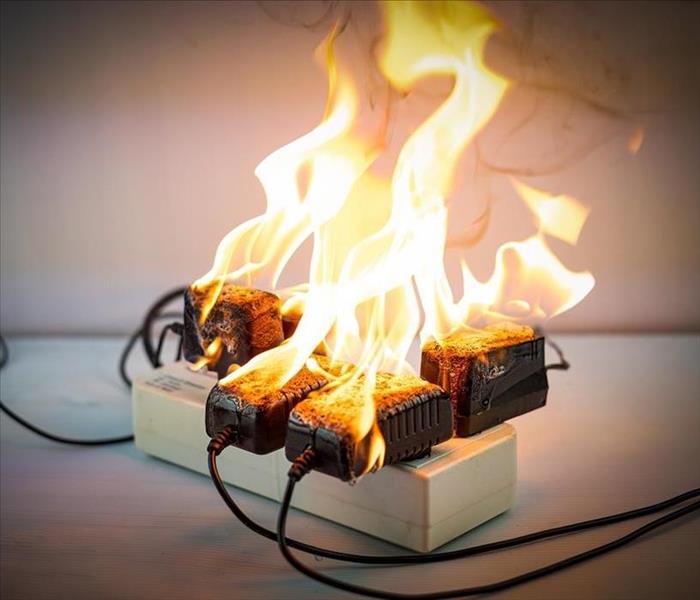Fire Safety: Electrical Focus | SERVPRO® of Clatsop, Columbia Counties
11/19/2020 (Permalink)
The holiday season is coming fast, and with it the temptation to string as many colored lights as possible inside and out. Before you start plugging everything in, do a quick review of your home’s electrical safety situation.
According to the National Fire Protection Association, “electrical distribution or lighting equipment” accounts for about 34,000 home fires every year. These hazards include cords, lighting, plugs and wiring.
From the point at which electricity enters your home to endpoint devices, we’ll look at the most common sources of danger:
Human Error
From using devices in an unsafe manner to allowing curtains to droop against heating elements, human carelessness contributes to many home electrical fires. The best remedy is caution. Always read appliance directions and follow them.
Never leave devices such as space heaters unattended. Make sure electrical devices and appliances have plenty of space around them. Treat electrical devices with a healthy respect in every situation.
Electrical Failure or Malfunction
After human error, electrical “failure or malfunction” makes the second leading cause of deaths from house fires. Many fires involve arcing, where a spark jumps from one conductor to another. Damaged wires and loose connections—in your house wiring or in appliances—can lead to arcing. So can faults in junction and control boxes.
Professional Advice. If your house has older wiring, it might be time for a visit from an electrician. He or she can look for any wiring that needs to be updated. Your electrician can also install arc-fault circuit interrupters to cut off power when dangerous arcing conditions occur.
Sharp-Eyed Solutions. For your part, you can check devices and appliances from small holiday lights through washers and dryers. Look for any exposed wires, loose cords or frayed coverings of cords/wires. Discard damaged devices or have them professionally repaired.
Distribution
Distribution problems also contribute to house fires. Connecting more than one appliance to a socket spells trouble. Similarly, extension cords should only be used occasionally, not incorporated as part of your day-to-day wiring solution.
Too many appliances connected to one outlet or circuit can lead to fires. Make sure you place no more demand on any one circuit or outlet than it can support.
From fire to storm to flood, disaster can strike a business at any time. To discuss a SERVPRO Emergency READY Profile for your business, contact us at any hour for assistance.






 24/7 Emergency Service
24/7 Emergency Service
